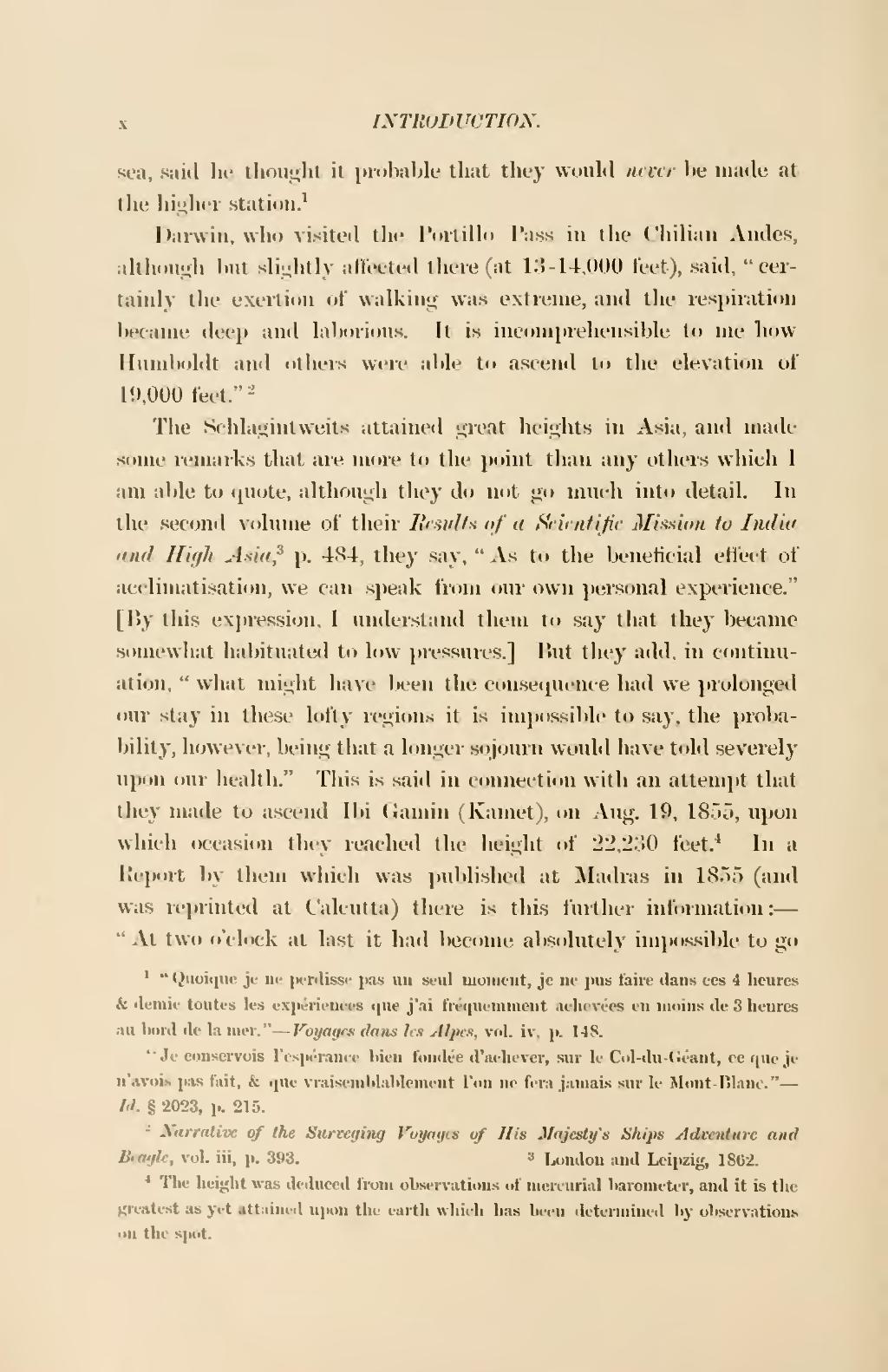sea, said he thought it probable that they would never be made at the higher station.[1]
Darwin, who visited the Portillo Pass in the Chilian Andes, although but slightly affected there (at 13–14,000 feet), said, “certainly the exertion of walking was extreme, and the respiration became deep and laborious. It is incomprehensible to me how Humboldt and others were able to ascend to the elevation of 19,000 feet.”[2]
The Schlagintweits attained great heights in Asia, and made some remarks that are more to the point than any others which I am able to quote, although they do not go much into detail. In the second volume of their Results of a Scientific Mission to India and High Asia,[3] p. 484, they say, “As to the beneficial effect of acclimatisation, we can speak from our own personal experience.” [By this expression, I understand them to say that they became somewhat habituated to low pressures.] But they add, in continuation, ”what might have been the consequence had we prolonged our stay in these lofty regions it is impossible to say, the probability, however, being that a longer sojourn would have told severely upon our health.” This is said in connection with an attempt that they made to ascend Ibi Gamin (Kamet), on Aug. 19, 1855, upon which occasion they reached the height of 22,230 feet.[4] In a Report by them which was published at Madras in 1855 (and was reprinted at Calcutta) there is this further information:—“At two o’clock at last it had become absolutely impossible to go
- ↑ “Quoique je ne perdisse pas un seul moment, je ne pus faire dans ces 4 heures & demie toutes les expériences que j’ai fréquerament achievées en moins de 3 heures au bord de la mer.”—Voyages dans les Alpes, vol. iv, p. 148.
“Je conservois I’espérance bien fondue d’achever, sur le Col-du-Géant, ce que je n’avois pas fait, & que vraisemblablement l’on ne fera jamais sur le Mont Blanc.”—Id. § 2023, p. 215. - ↑ Narrative of the Surveying Voyages of His Majesty’s Ships Adventure and Beagle, vol. iii, p. 393.
- ↑ London and Leipzig, 1862.
- ↑ The height was deduced from observations of mercurial barometer, and it is the greatest as yet attained upon the earth which has been determined by observations on the spot.
